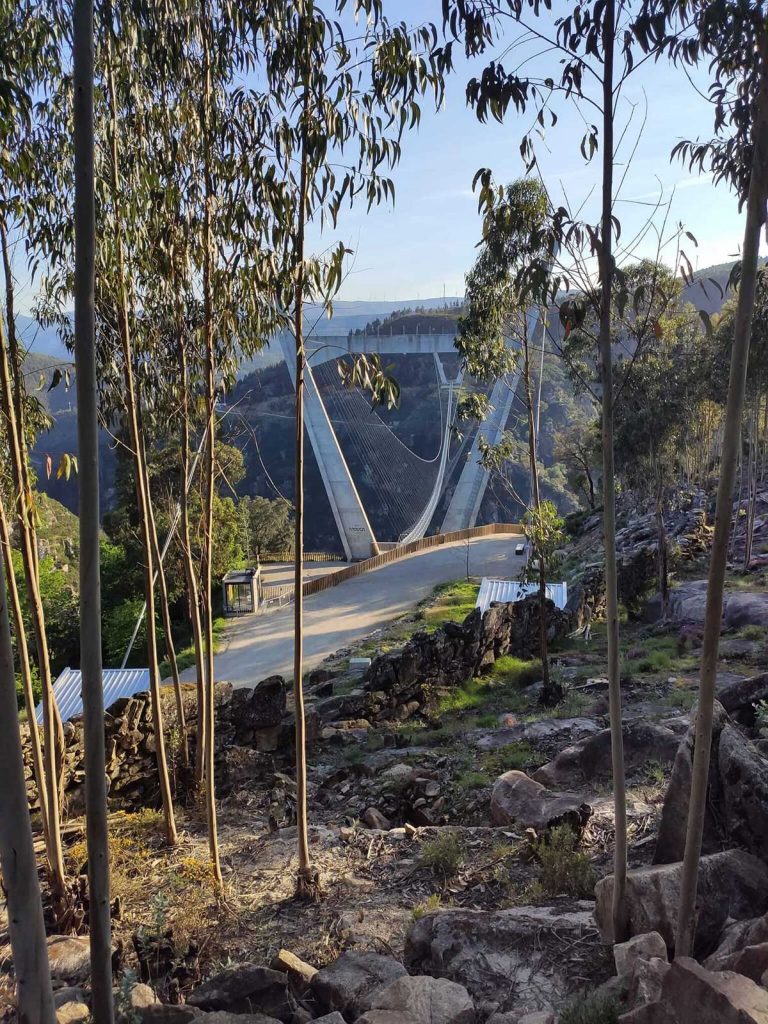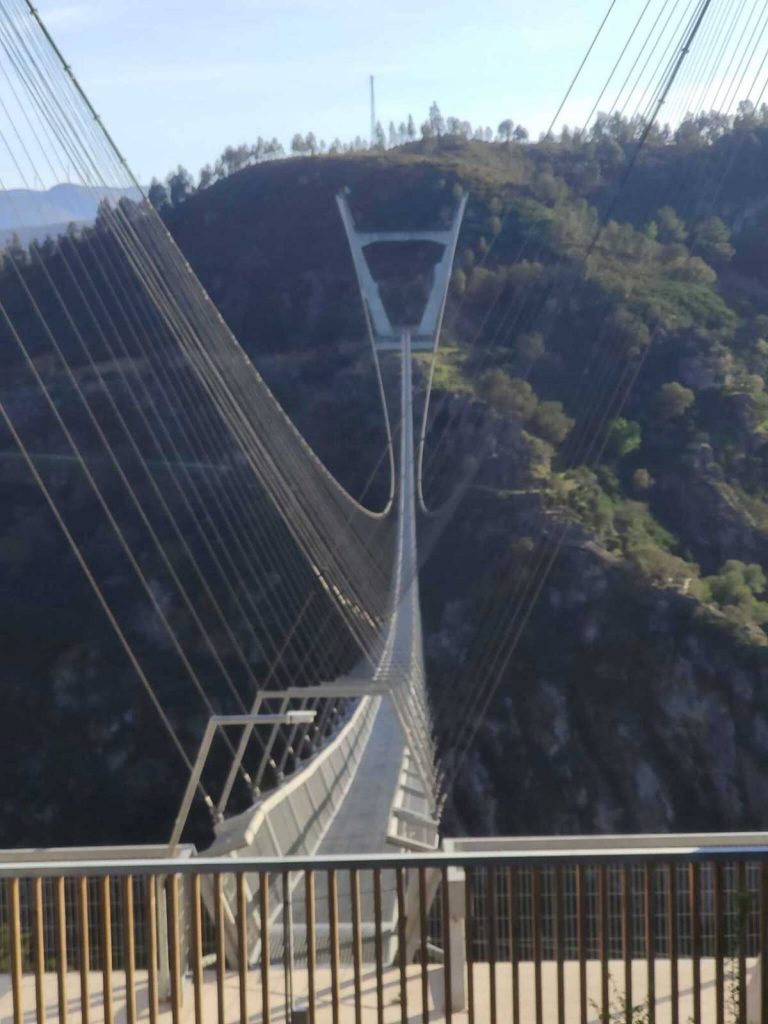Day 9
The whole day was devoted to exploring Peneda-Gerês National Park. We admired the waterfalls, climbed over rocks to viewpoints atop the mountains, marveled at cows with lyre-shaped antelope-like horns, and had lunch with a view of the lake.
The beauty of nature cannot be conveyed in words; you have to come and see it. I’m very pleased that, after hesitating due to extending the trip, I still included these places in the itinerary. And our base in the park was, as it turned out, perfectly chosen. From Gerês, it’s easy to set out on the park’s two routes, western and eastern. There’s also a small spa with thermal waters in Gerês.

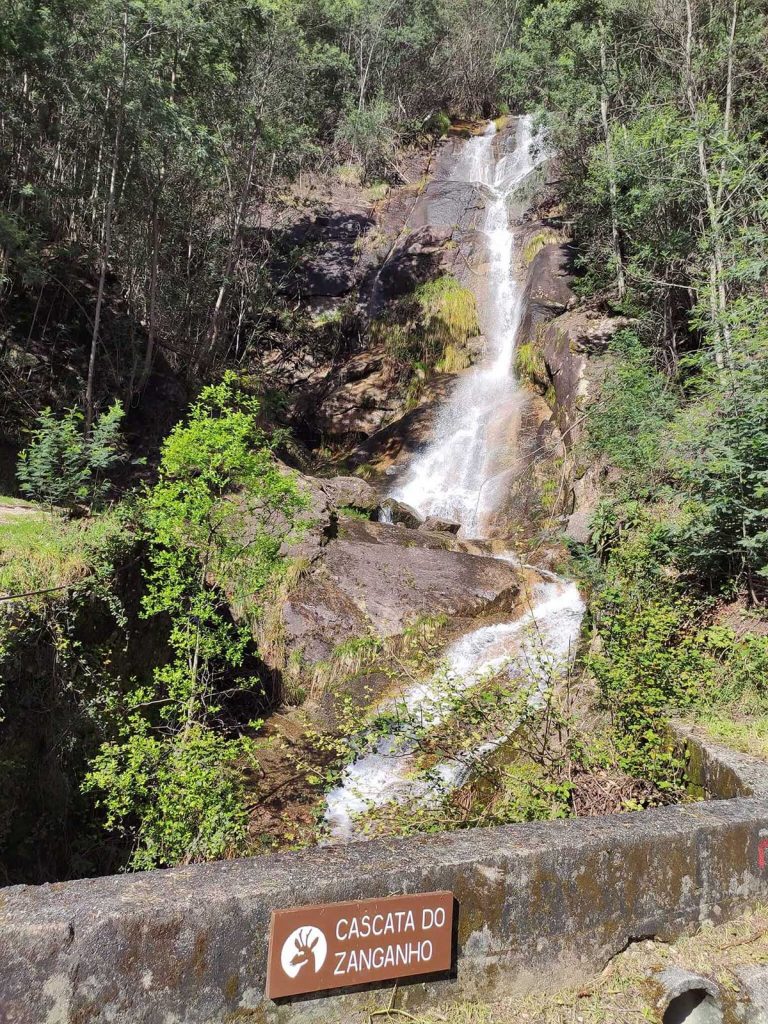
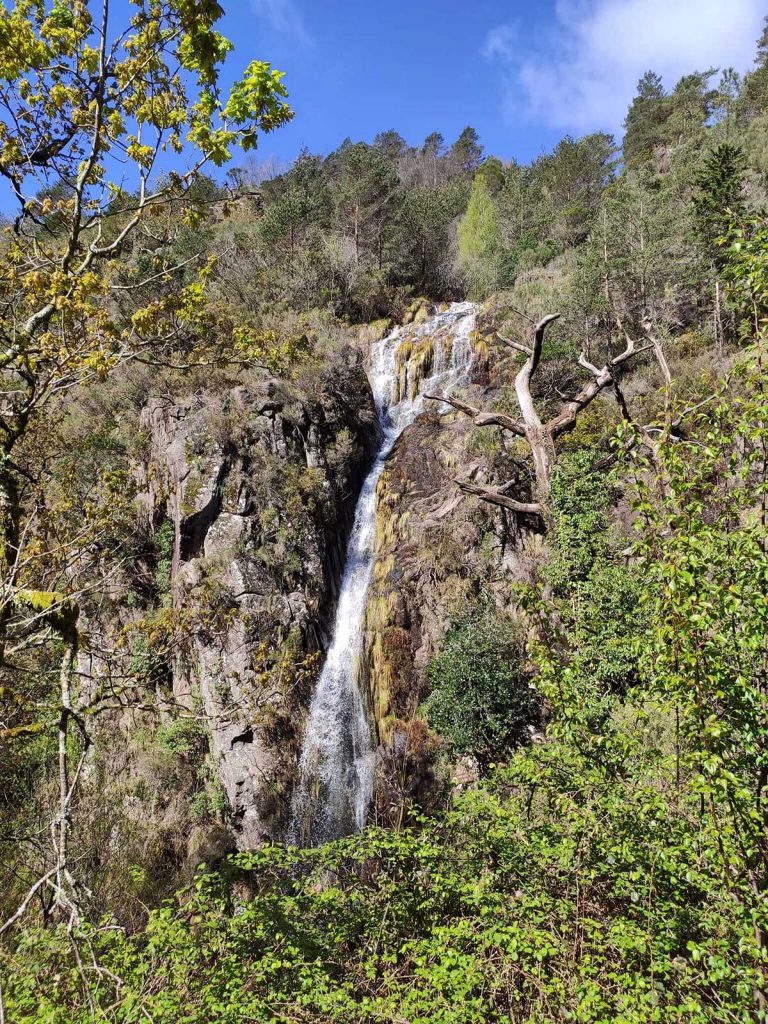
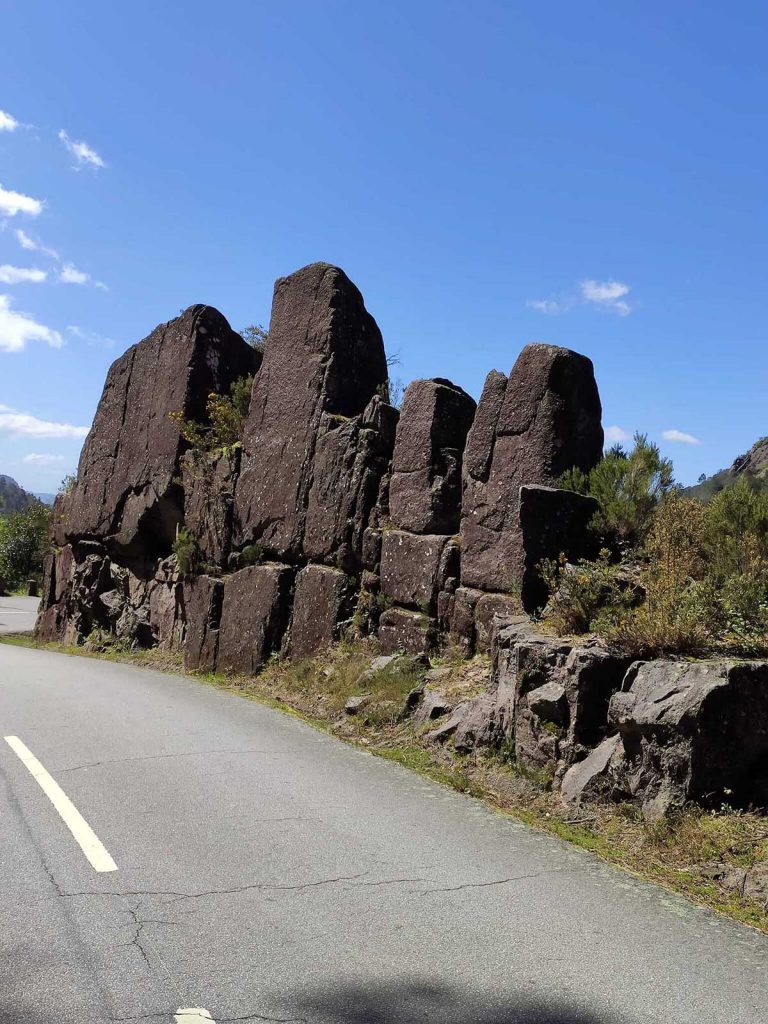
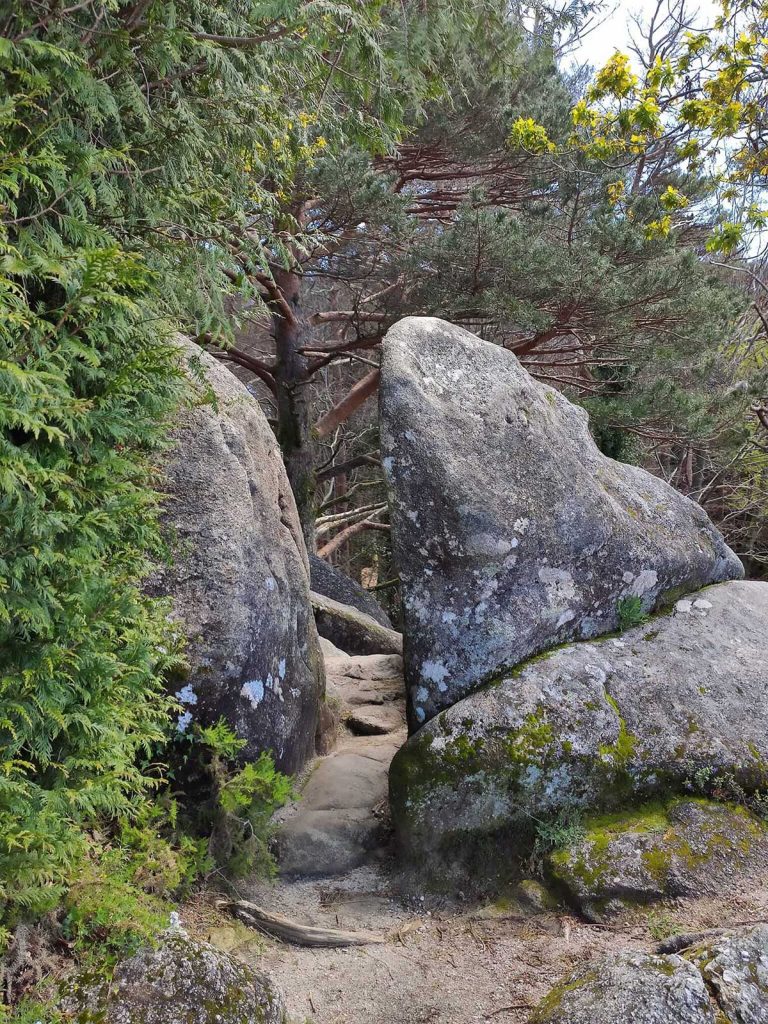
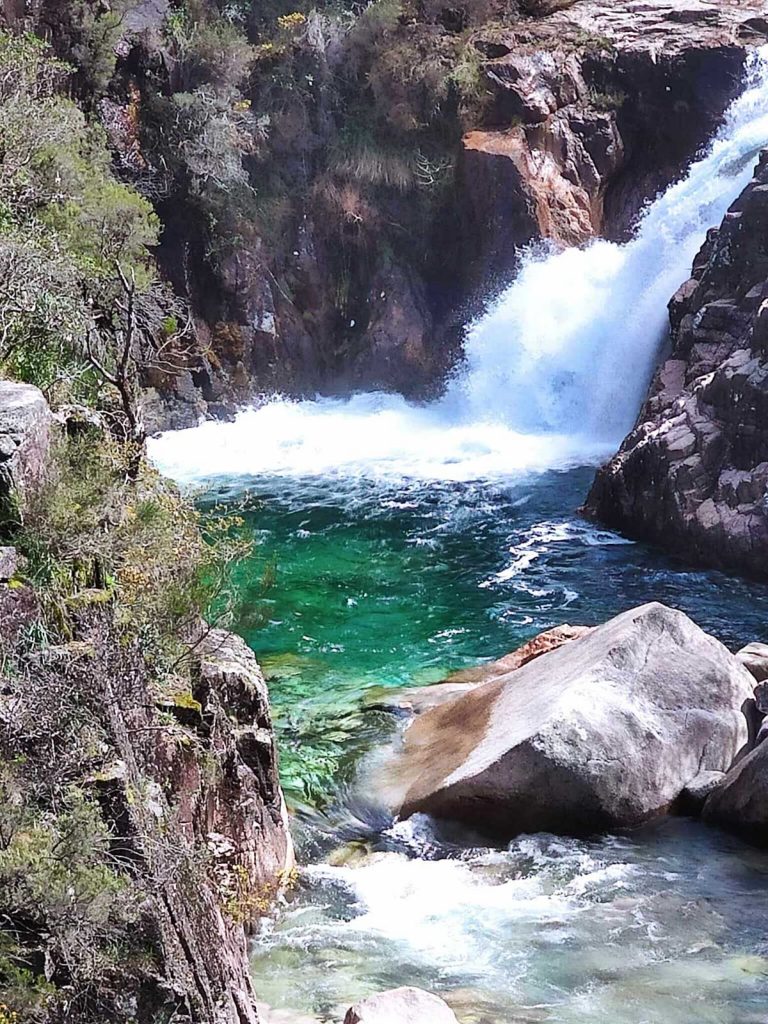
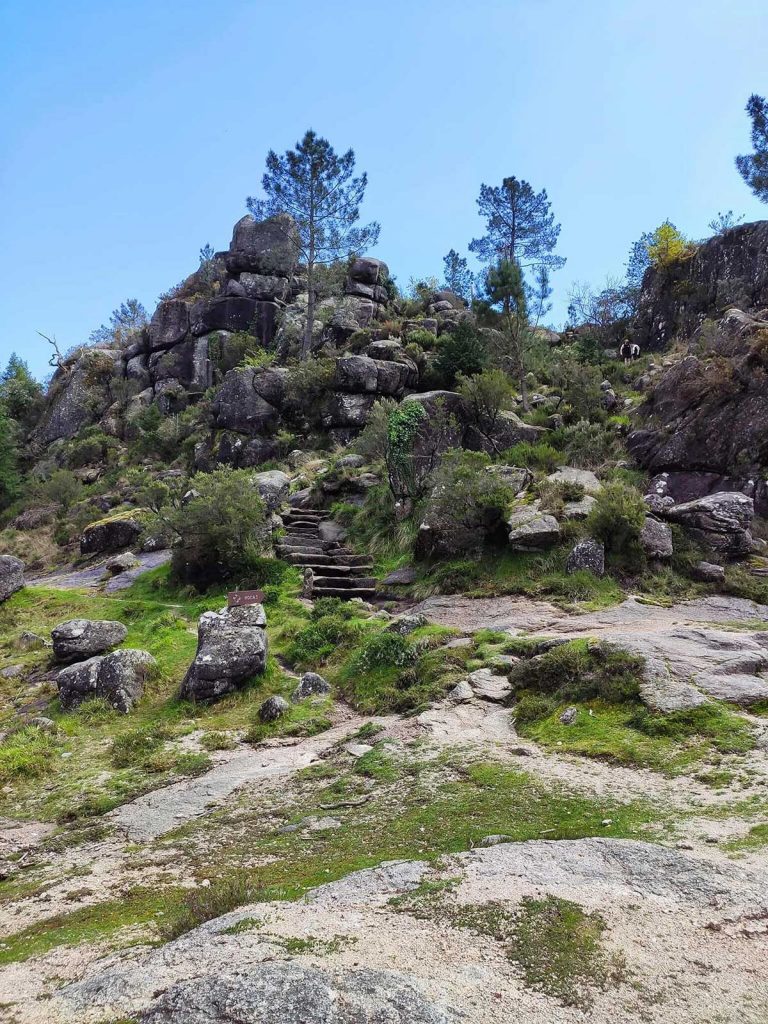
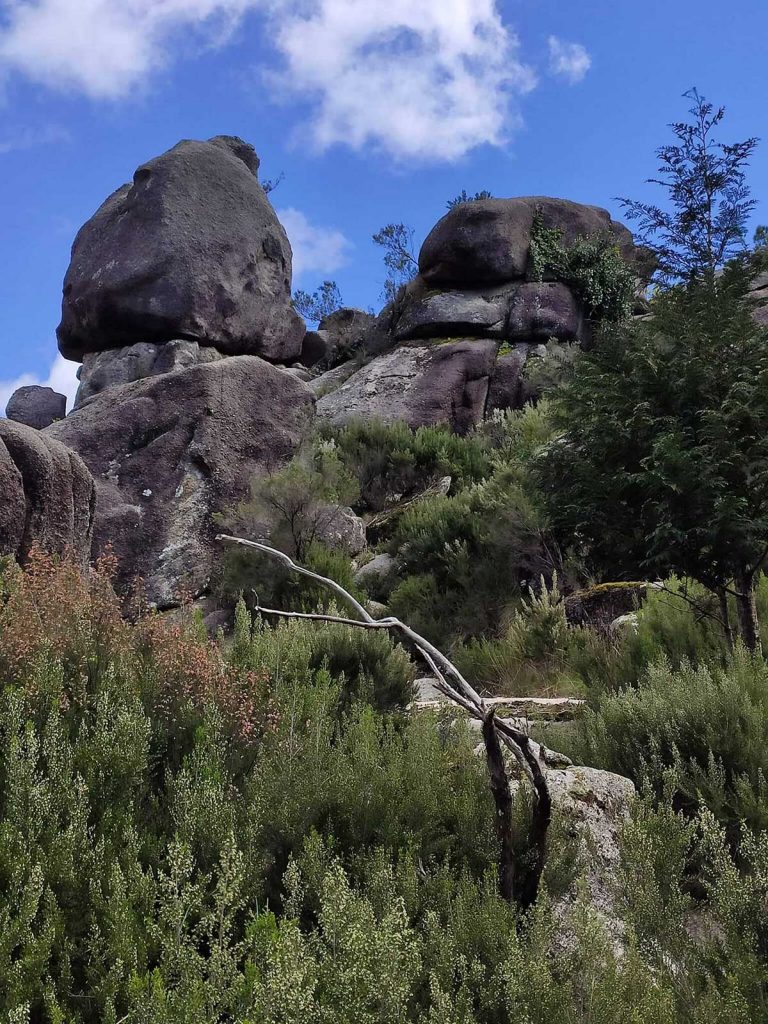
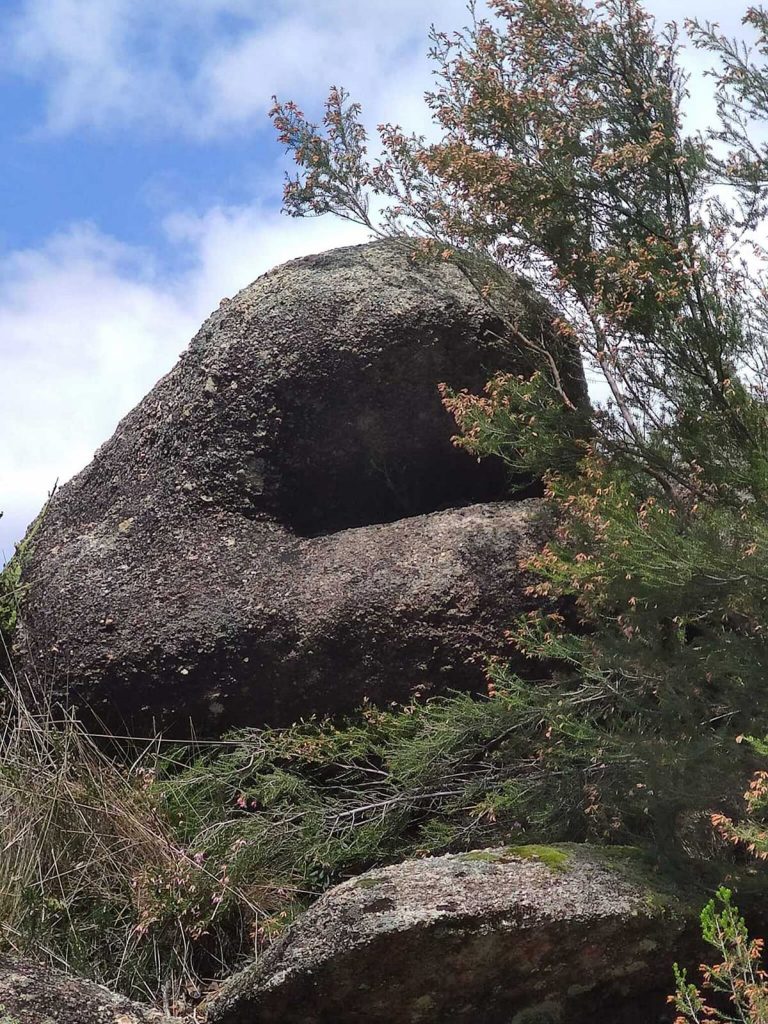
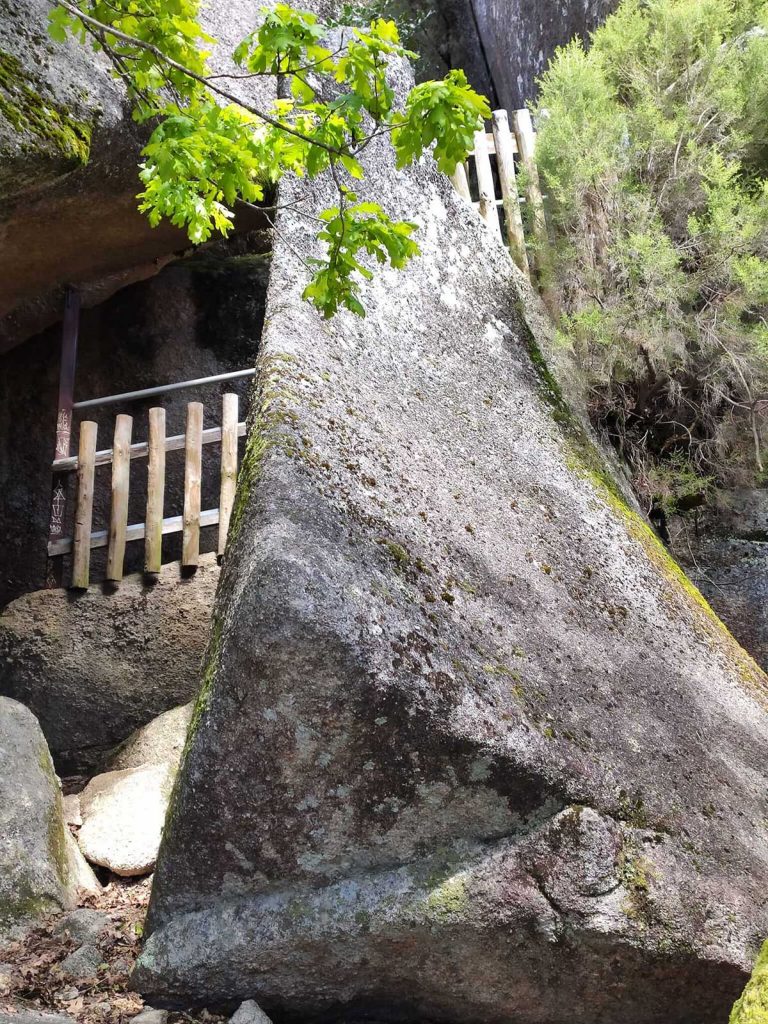
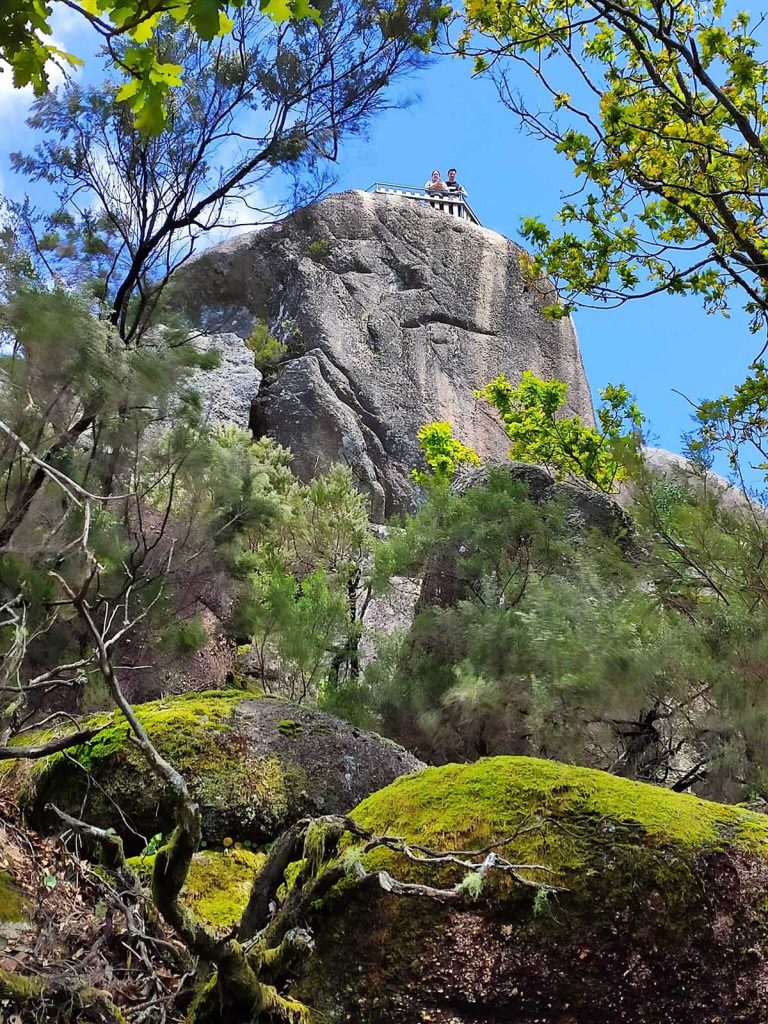
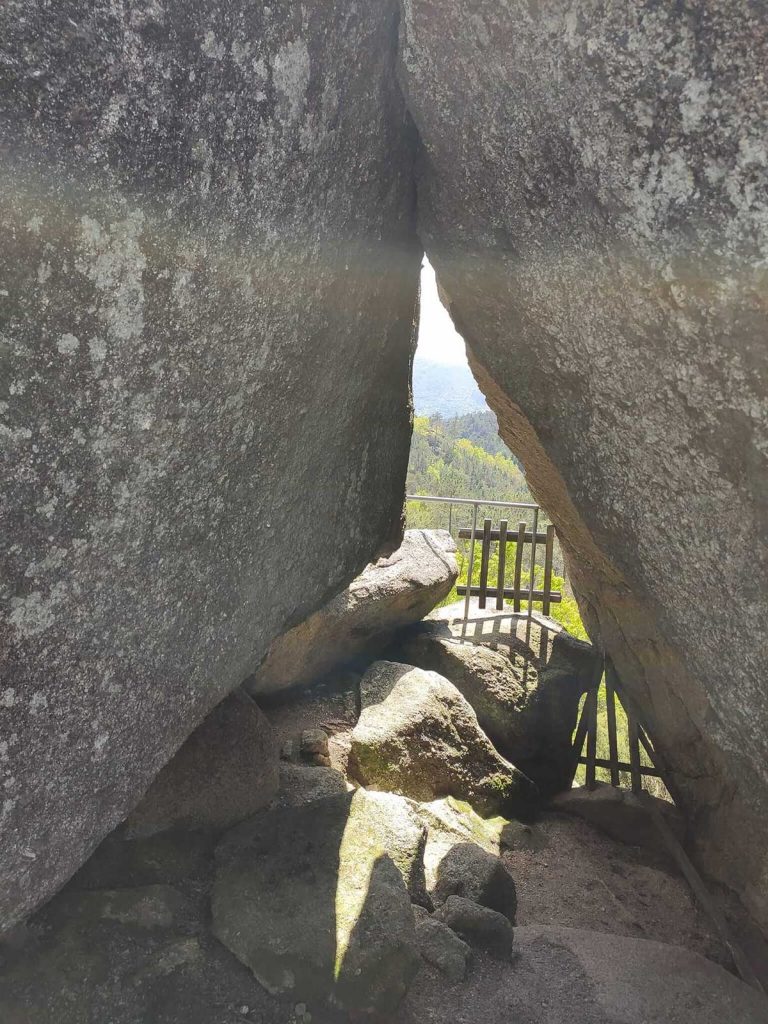
And the place we stayed at is the most beautiful in the area. The accommodation we rented here turned out to be the best of all we’ve had so far. We booked without breakfast, but the hosts prepared for us (just once, not every day) milk, juice, butter, a bit of cheese and cold cuts, and at 7 a.m. fresh rolls were regularly hanging on the door. Is that called without breakfast? The hosts have two houses with four apartments. An apartment costs €70 for two. And the view from the houses, as you can see, is simply wonderful.
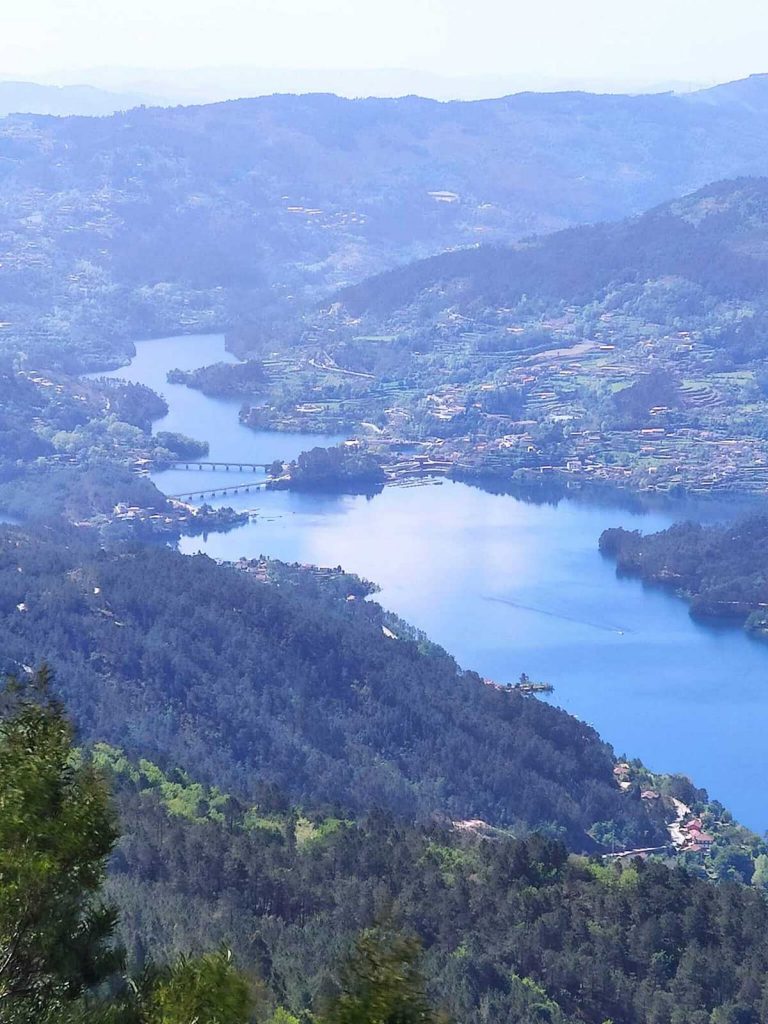
And now I want to share with you with what I had put off for later. I apologize to those many who already know these stories, and I hope they will be interesting to those who do not.
First, the story associated with Alcobaça. Infante Pedro, son of King Afonso IV of Portugal, fell in love with the Spanish noblewoman Inês de Castro, who became his favorite and bore him four children. The king and his courtiers feared this might lead to undesirable political consequences and ordered Inês’s murder. When Pedro—now King Pedro I—came to power he exacted brutal revenge on the courtiers, personally tearing hearts of two of them from their chests.
Another legend tells that the king ordered Inês’s body to be exhumed, dressed in royal robes, and seated on the throne. He then commanded the courtiers to swear allegiance to her by kissing her hand. Pedro and Inês are buried in the church of the monastery at Alcobaça.
The second legend is connected with the town of Barcelos, located on the Portuguese section of the Way of St. James leading to Santiago de Compostela. A pilgrim passing through the town was accused of theft and brought before a judge who was about to dine on a roasted rooster. No pleas or assurances of innocence from the unfortunate pilgrim swayed the judge, and he condemned him to death. Then the poor man cried out, “If I am innocent, this rooster will crow at the moment of my execution!” And so it happened; the pilgrim was saved, and the rooster became a symbol of justice in Portugal and the country’s most popular souvenir.
Tomorrow we begin heading south, back to Lisbon, completing the circle around the western side of Portugal.
Days 10 – 11
Due to extraordinary circumstances, I ha to combine these two days. Yesterday morning we explored Peneda-Gerês National Park a little more—the scenery there is simply stunning. We visited the bridge locally known as the Devil’s Bridge, not because it’s perilously dangerous, but because of some local legend.
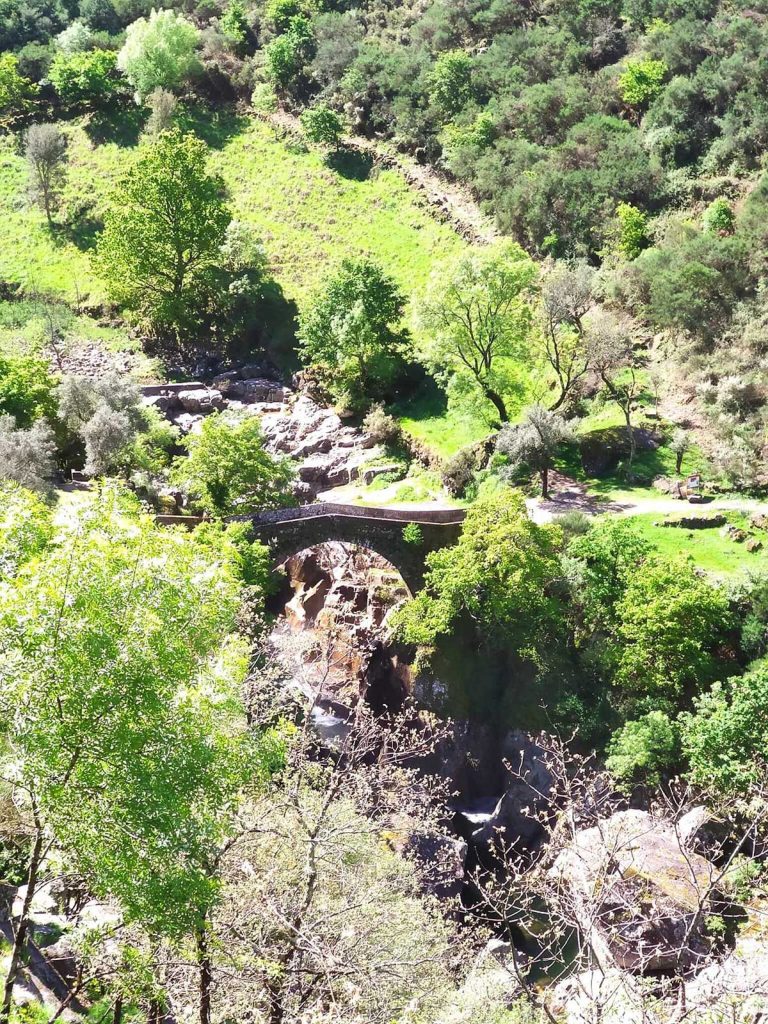
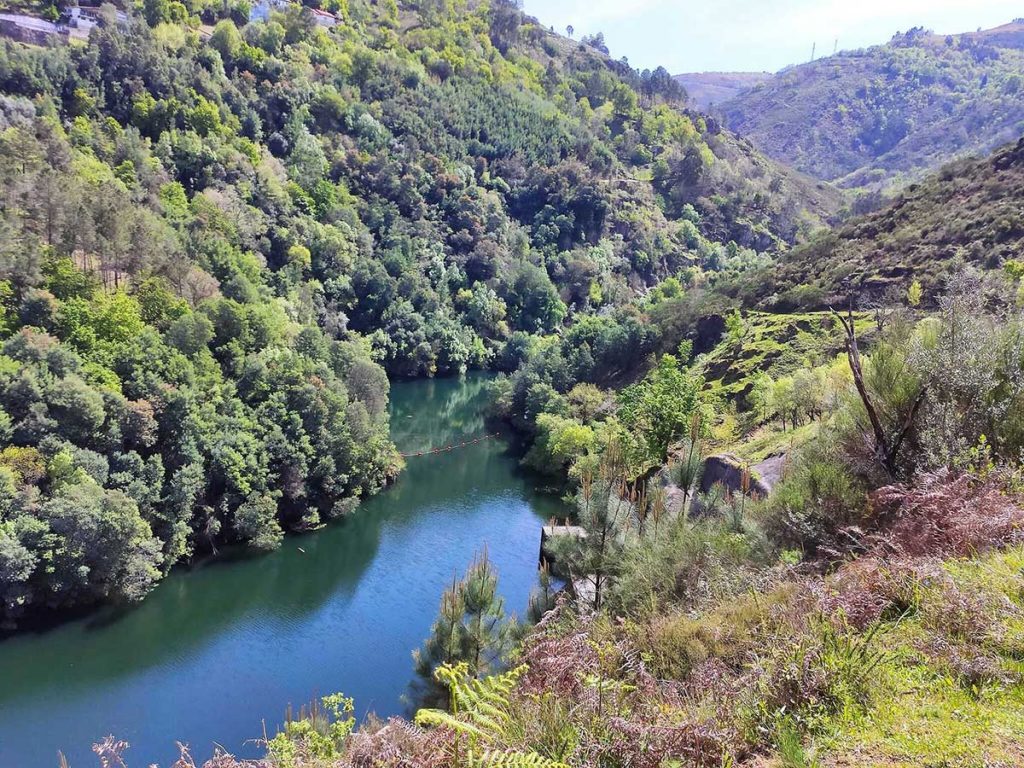
You can reach it in two ways: from above, the point your navigator brings you to, and from below, via the road. In the first case, there’s quite a long and steep descent; in the second, the approach is less demanding, but still of some difficulty. We contented ourselves with a view and photos from above, since the road awaited.
Having driven up to the high dam of the power station (could be omissed), we then headed to Guimarães – name that’s very tricky to pronounce correctly. The city is delightful, with a compact old town, a distinctive and beautifully ornamented style of houses, an imposing castle with crenellated battlements, and cosy squares where hundreds of visitors to this UNESCO-listed city admire it while sipping beer or coffee.
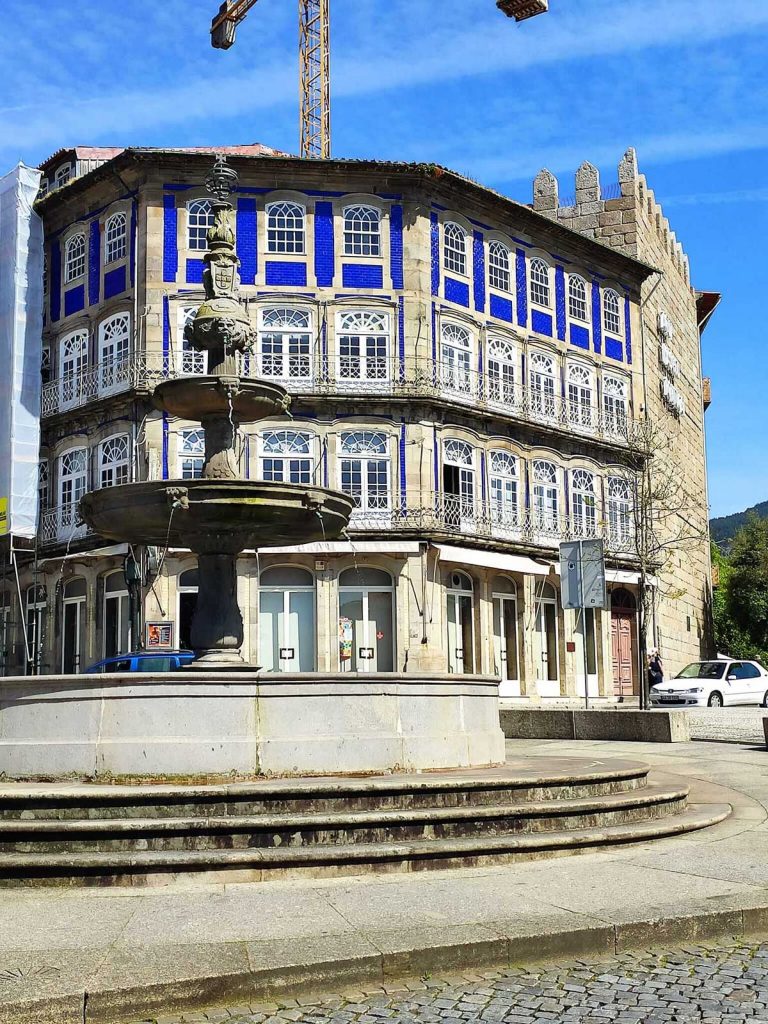

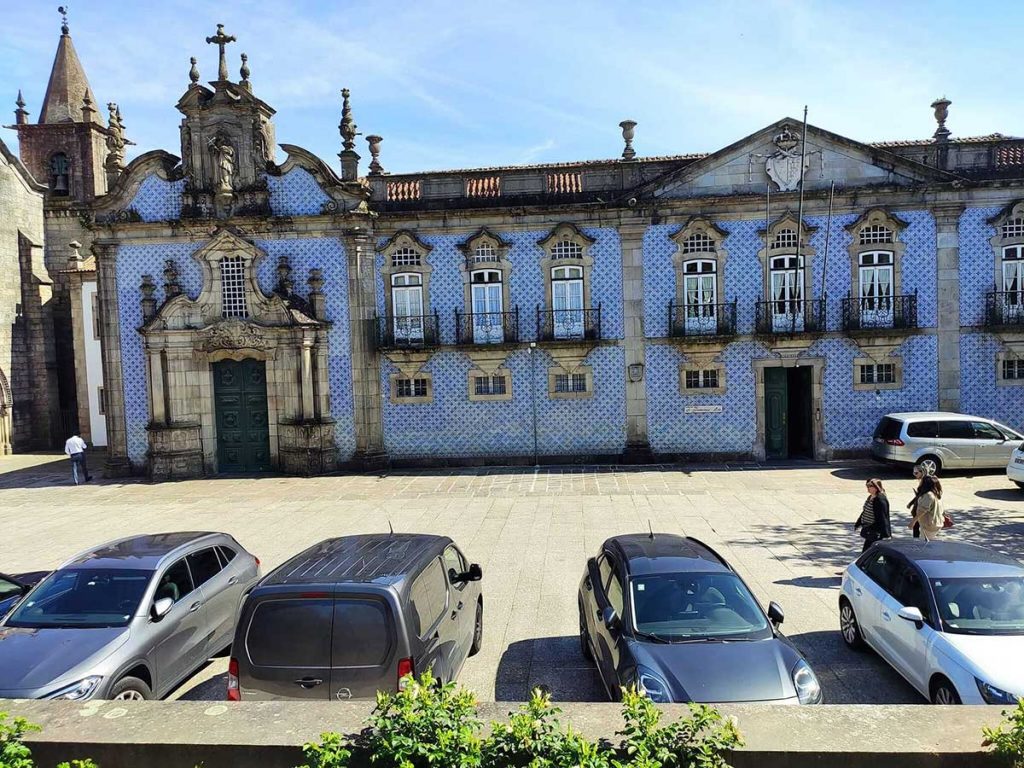
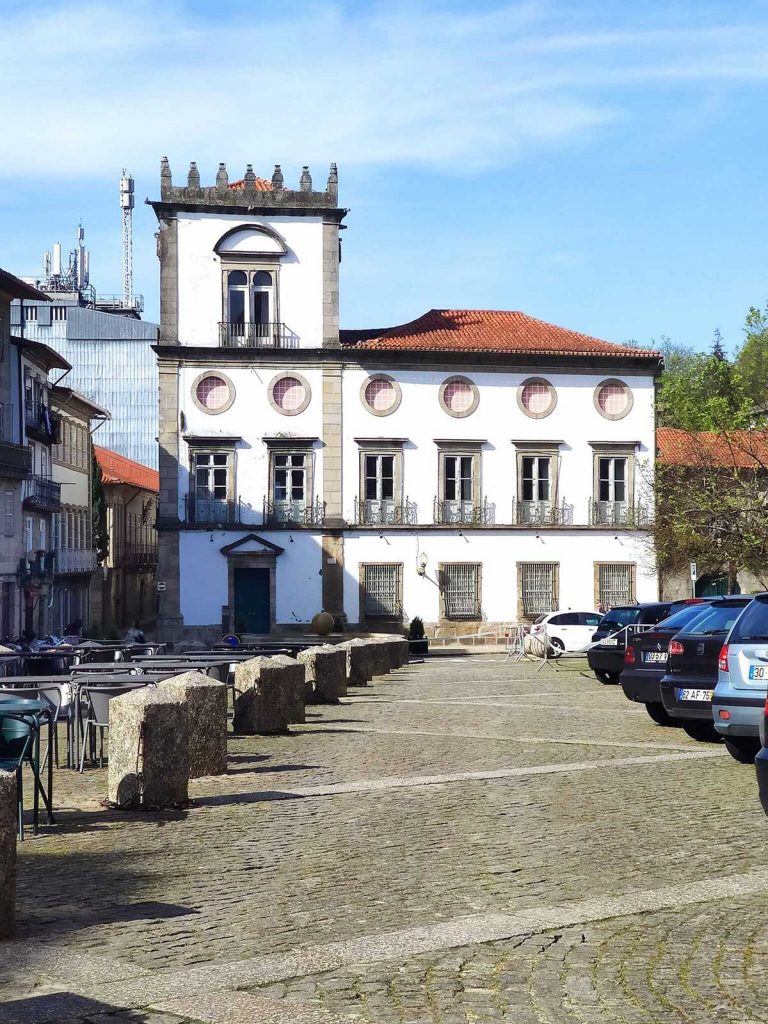
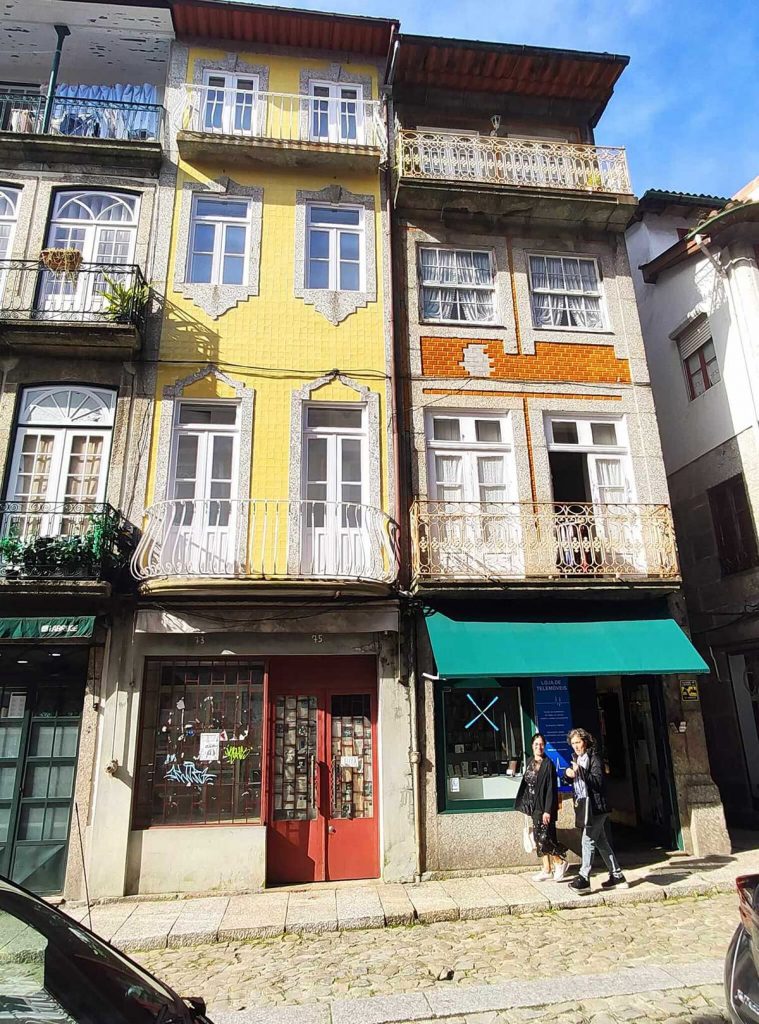
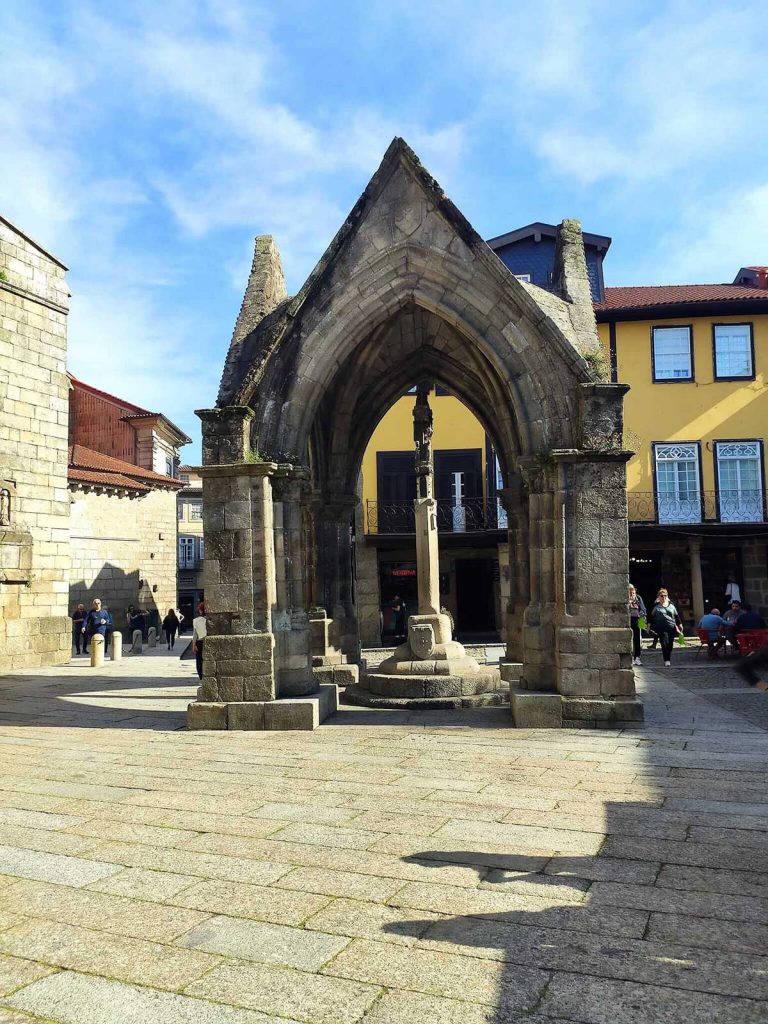
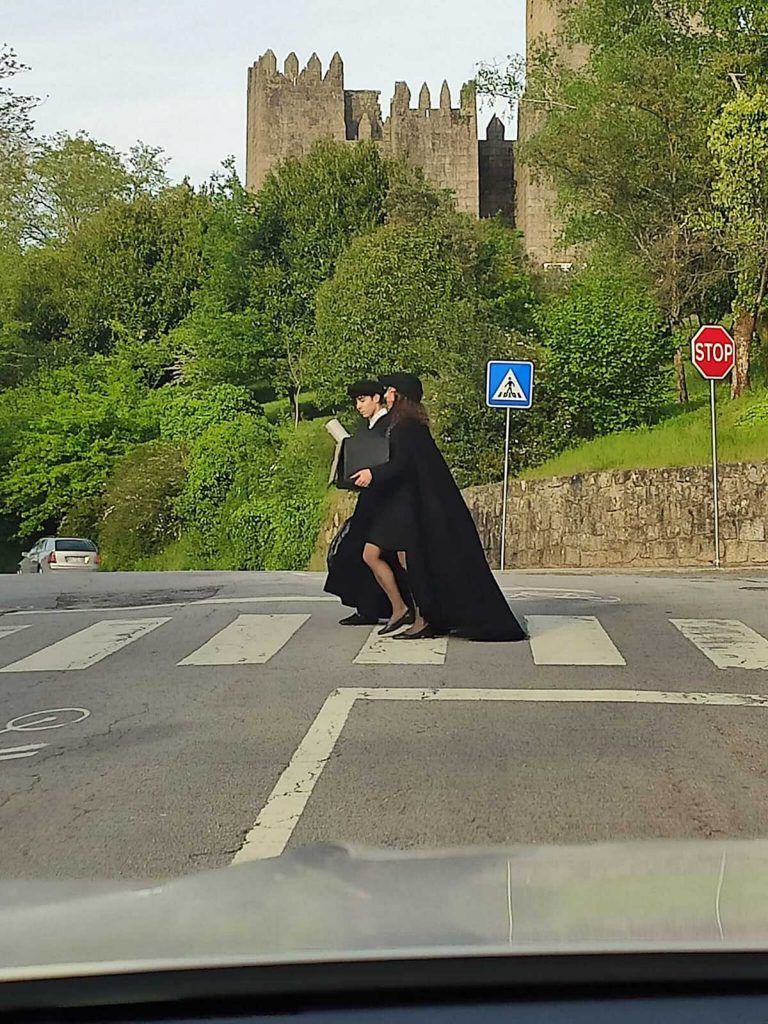
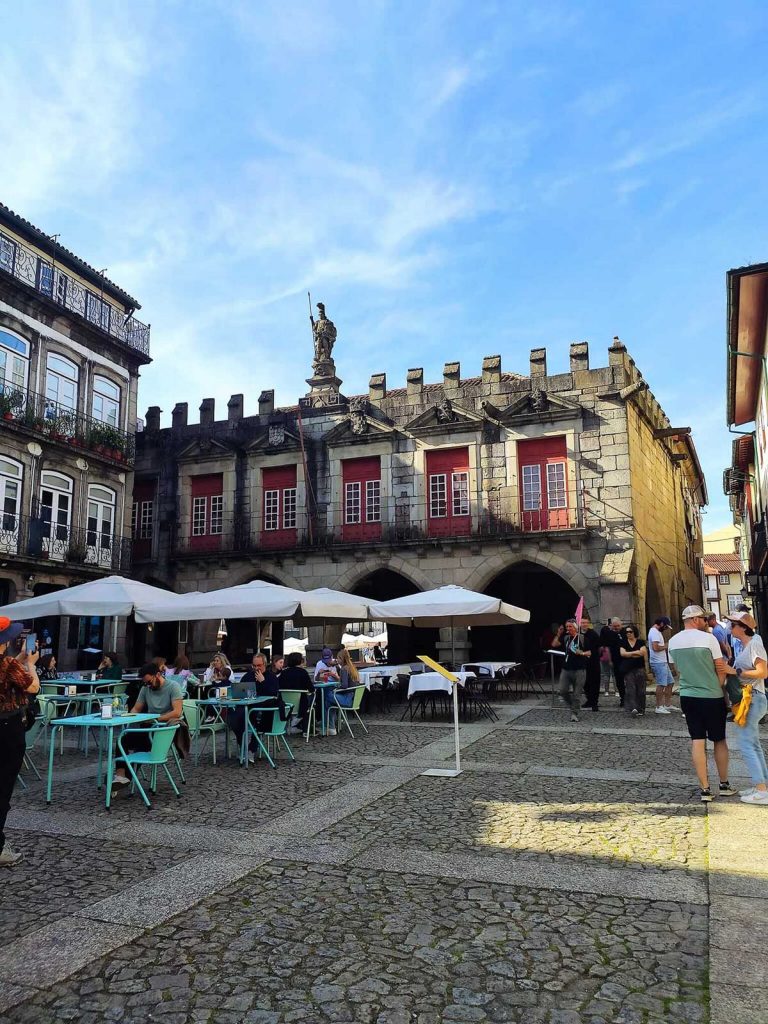
Unfortunately, we were not destined to join them: Rosa, the lovely owner of the lodging we left in the morning, informed us that she had discovered our forgotten belongings in the closet, and we had to make a 200-kilometer round trip to retrieve them. (By the way, a note for those who follow in our footsteps: the village where we stayed was a continuation of Gerês but was already called Rio Caldo. I’ll say it again, even if I repeat myself: a place of exceptional beauty.)
But our misadventures didn’t end there: the navigator delivered us not to the lodging but to a point 44 km away, and we only reached the correct location by 11 PM. After nearly four hours of nonstop driving, there was no time for any report.
What further we liked in Guimarães was that in the underground parking lot, the payment machine obediently took a ten-euro note and returned eight euros in change. You might say, “What a novelty—exactly as it should be.” Well, yes, but in Braga the machine for amounts up to €4.50 only accepts coins. And we didn’t have any. A local fellow came to our rescue by paying for us. Another reminder to always keep some coins set aside for such occasions.
And one more thing. Now, having visited Braga and especially Guimarães, I can say they cannot be compared to Porto at all—they are too different. Porto is a powerful, dominant city, proudly displaying its virtues and unashamed of its flaws. Braga and, even more so, Guimarães are beautiful cities, quietly living their own lives. I think we shouldn’t compare the cleanliness of their streets and houses but rather take from each what they have to offer—and they have much to offer.
Today began with our return to missed Amarante—the town we had not toime to visit yesterday, the first of several “small” tourist towns on our way back to Lisbon. In Amarante there is only one “site,” but what a site! It harmoniously combines the ancient bridge over the Tâmega River and two churches—St. Gonçalo and, above it, the Church of São Domingos. From the tiny square between them, one never wants to leave. Parking is literally next door.
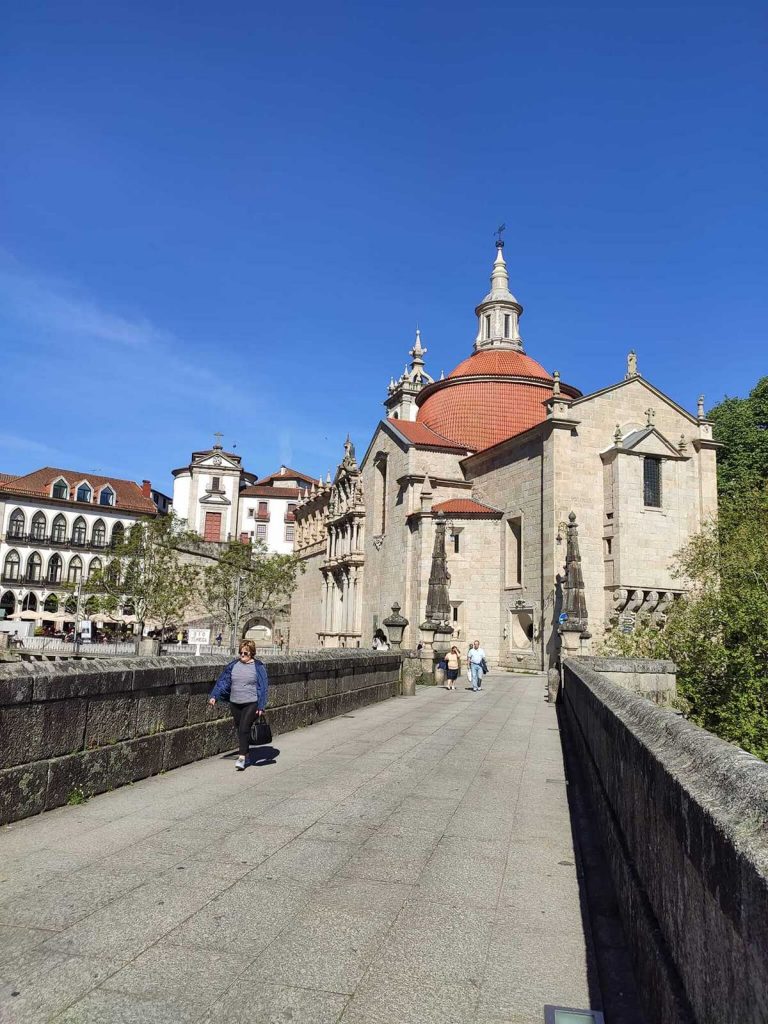
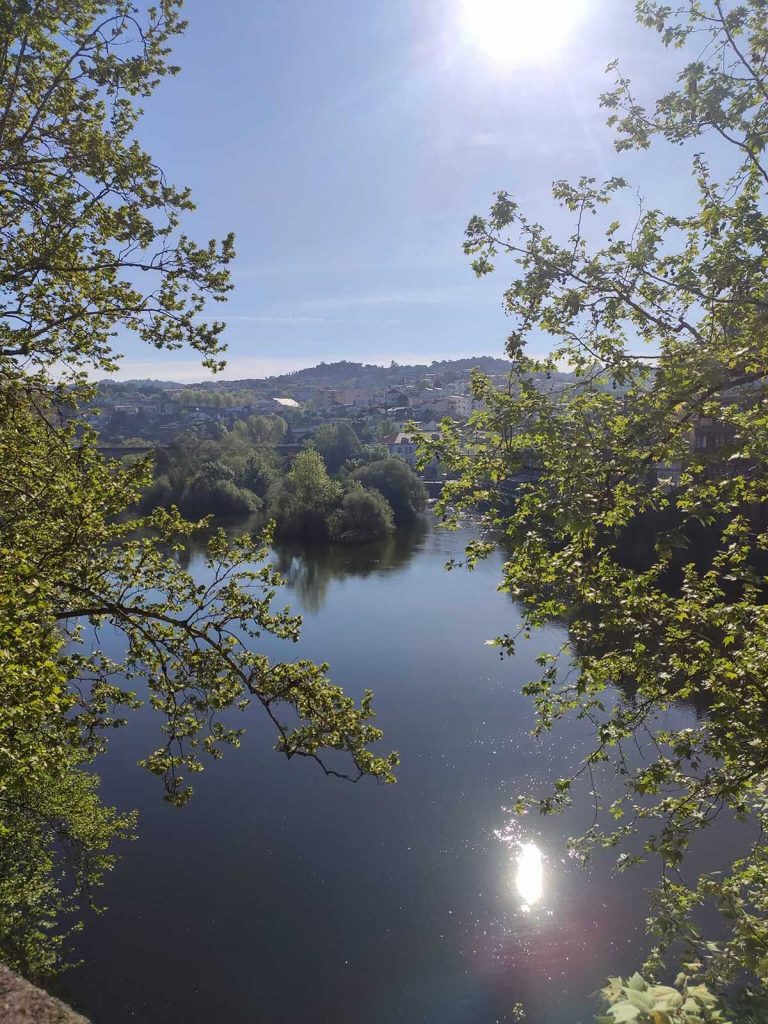
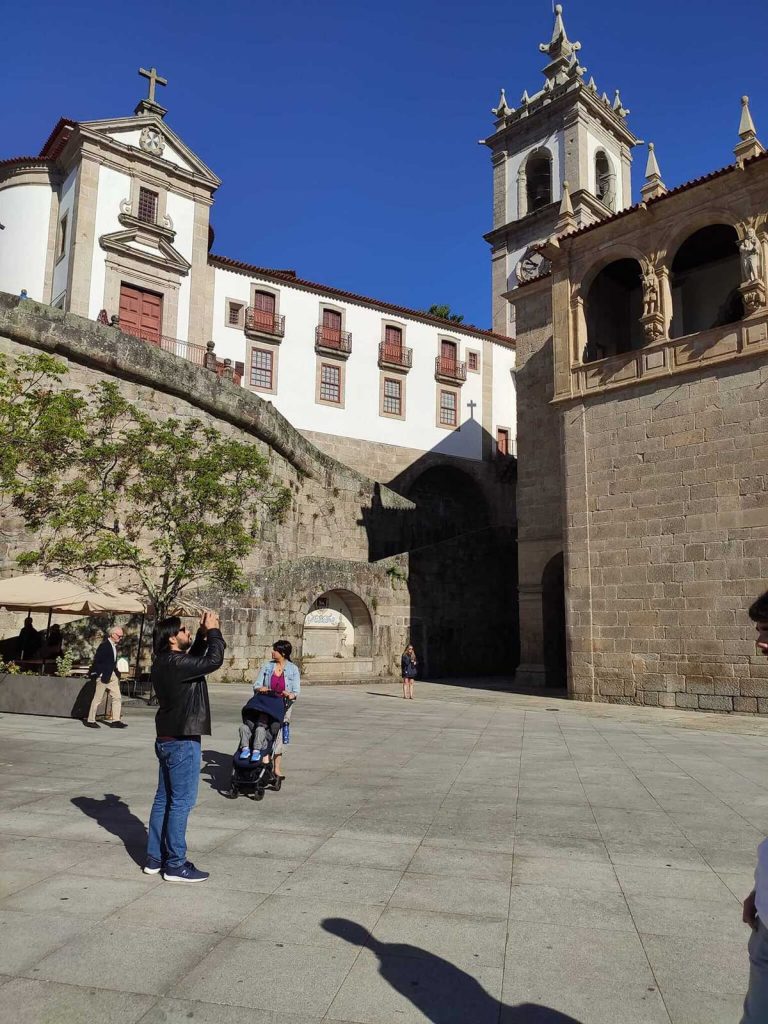
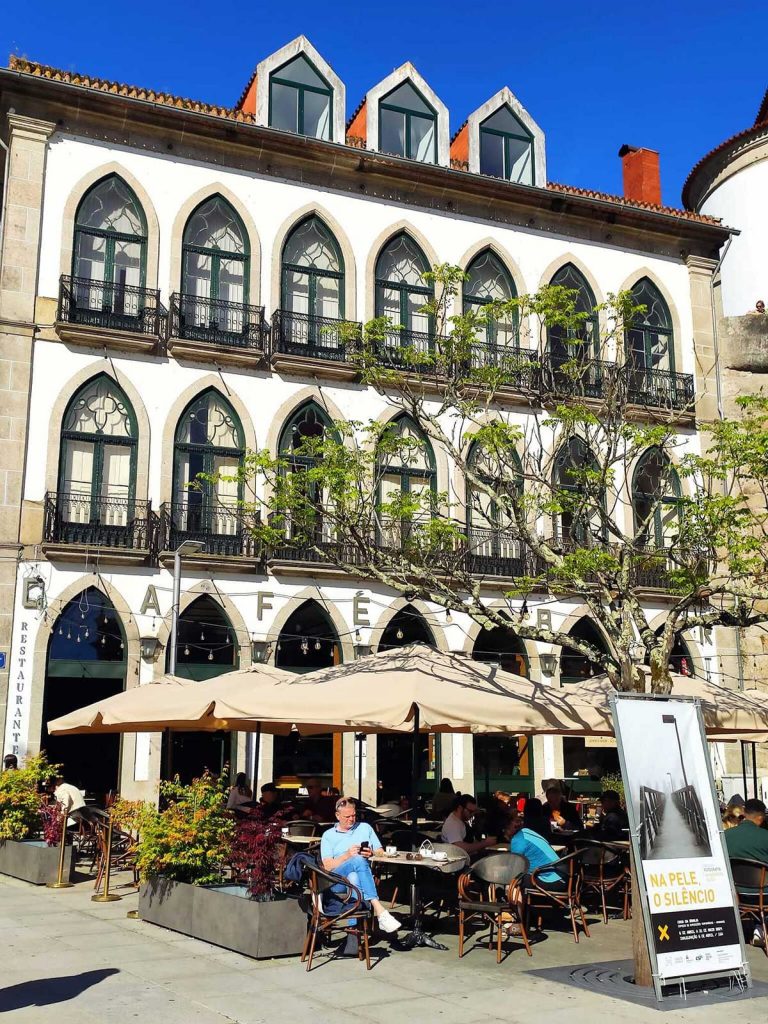
We spent the rest of the day mostly in Alvão Nature Park. The landscape here is more rugged than in Peneda-Gerês National Park; the mountain summits are bare, yet much of the terrain is covered in an exceptionally beautiful yellow-and-crimson carpet of what resembles heather (please forgive my botanical ignorance).
We descended (1.6 km one way) to a charming little stream, had lunch for a pittance at a small restaurant in the village of Ermelu, and then made a large loop, driving through a significant portion of the park. And again, the rocks. What rocks they are! Boulders, massive stones, giant monoliths! You want to photograph every single one.
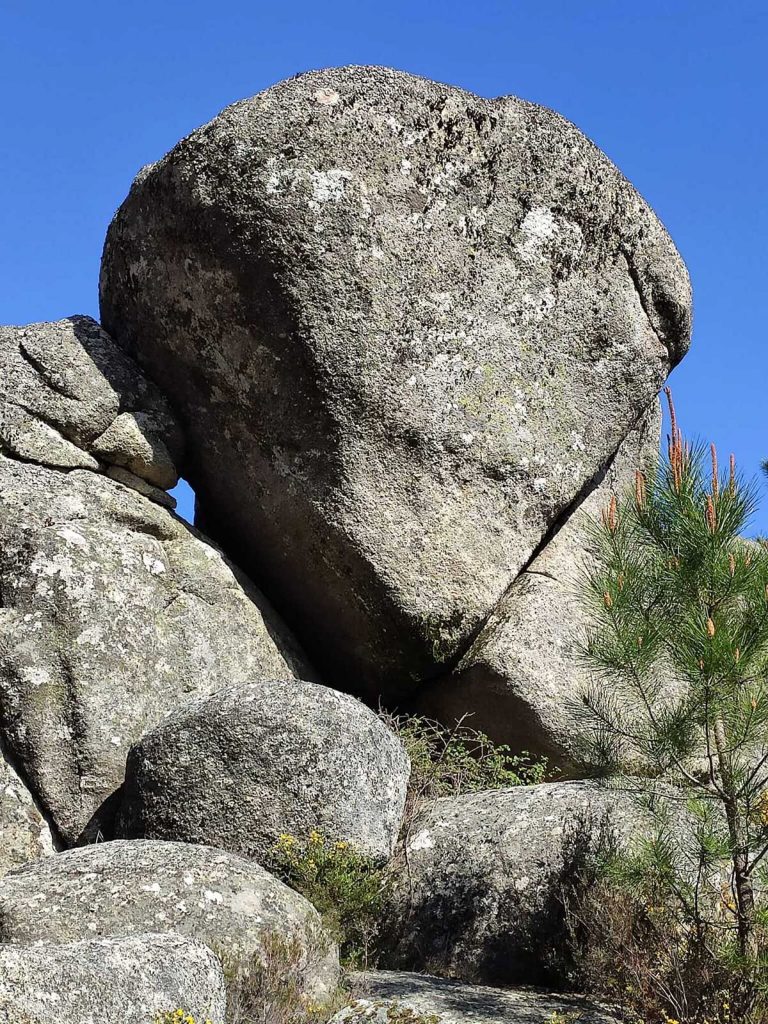
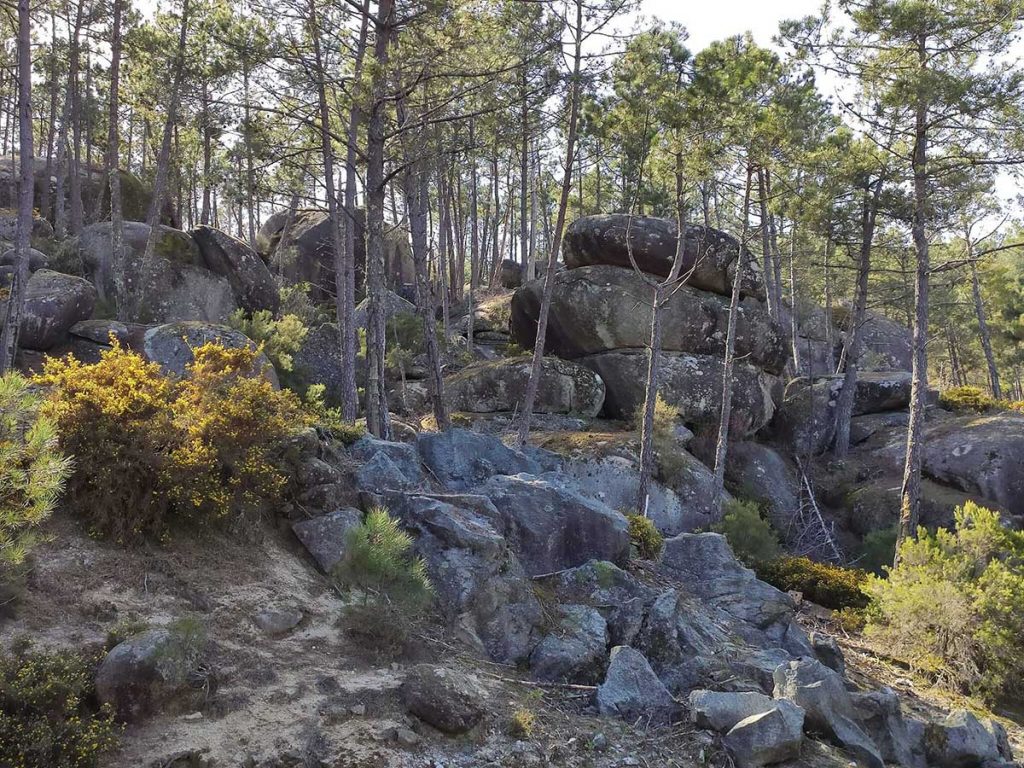
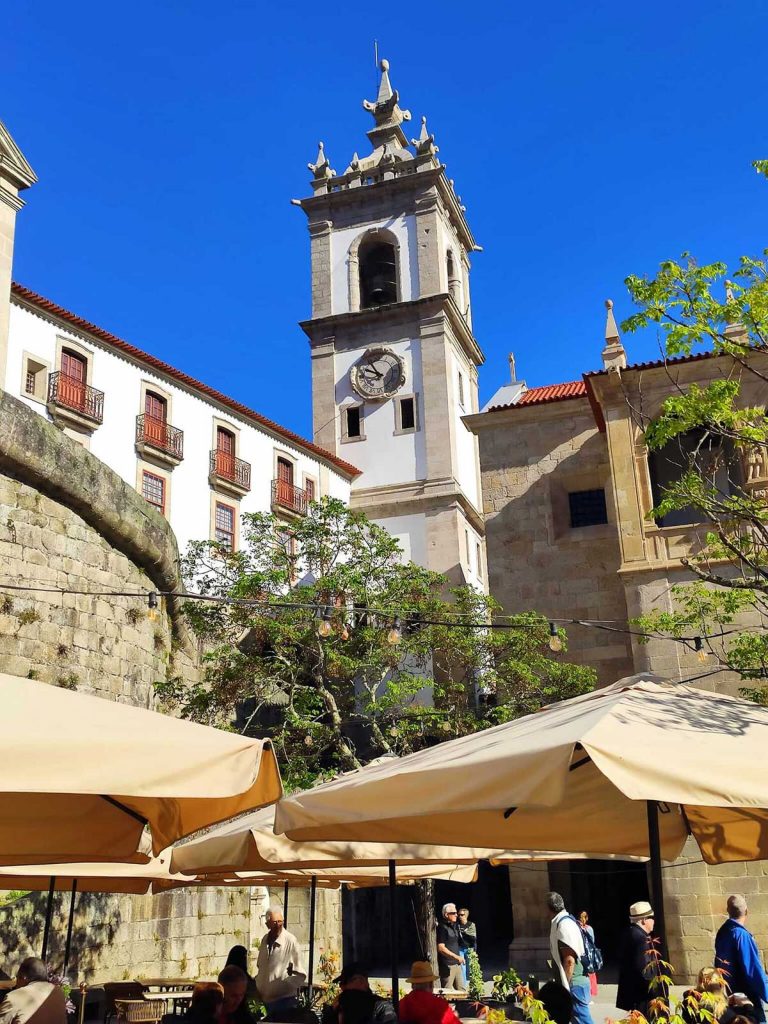
And after the park, having driven almost without stopping through the town of Vila Real -which does have a couple of interesting churches – we hurried to the nearby Mateus Palace, a masterpiece of late Portuguese Baroque. The façade of this palace, set in a park with a small lake, is very beautiful.
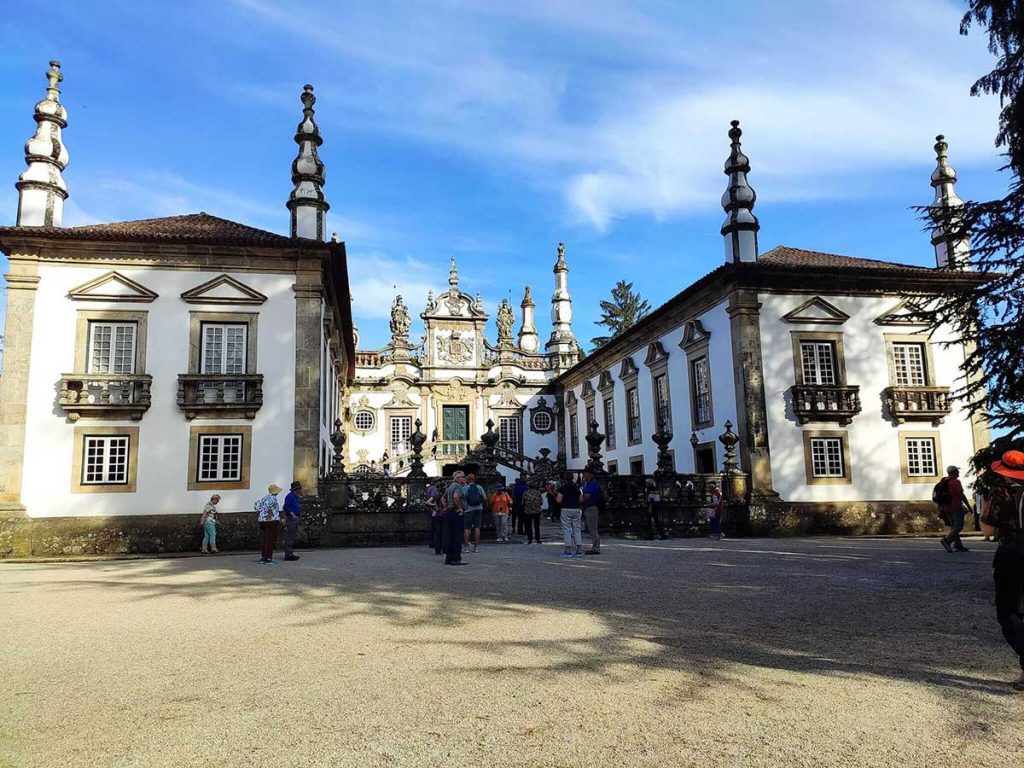
Entry to the palace is only with a guide; the last tour is at 5:30 PM (it was in French—I’m not sure if that’s the regular schedule or just for that day), lasts 50 minutes, and costs €18. You can purchase a ticket for the park and chapel only for €12.50, which is what we did.


Since we are now in Portugal’s main wine region—the Douro Valley—everything here revolves around wine. And in the castle too. We each enjoyed half a glass of a very pleasant, light, slightly sparkling rosé called Mateus (which is half the price in the souvenir shop across the street), and after tasting a 2005 Port, we immediately added a bottle each to our previous purchases. When we arrived at our lodging, we found a small bottle of red wine in the room instead of water, as is customary elsewhere. We gladly took care of it. Life is good!
Day 12
After spending the night in the town of Pinhão, we discovered that the famous azulejo-covered railway station is right next to our accommodation. We went there and found wonderful tile panels—some of the best we’ve seen in Portugal. And there are a lot of them there.
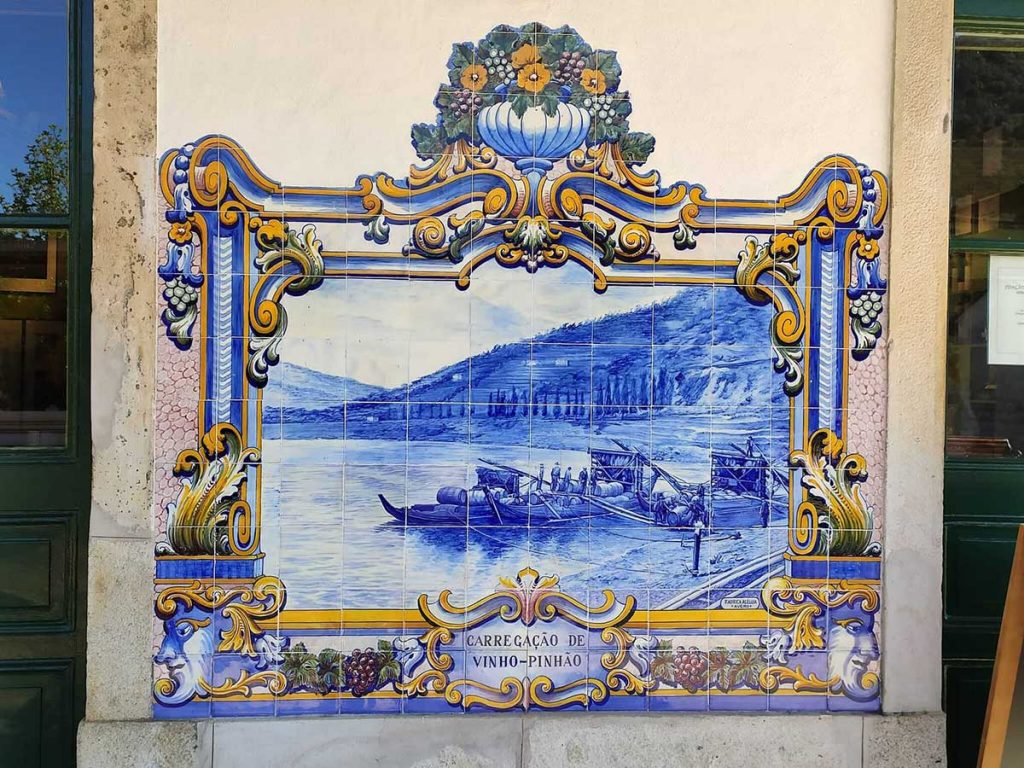
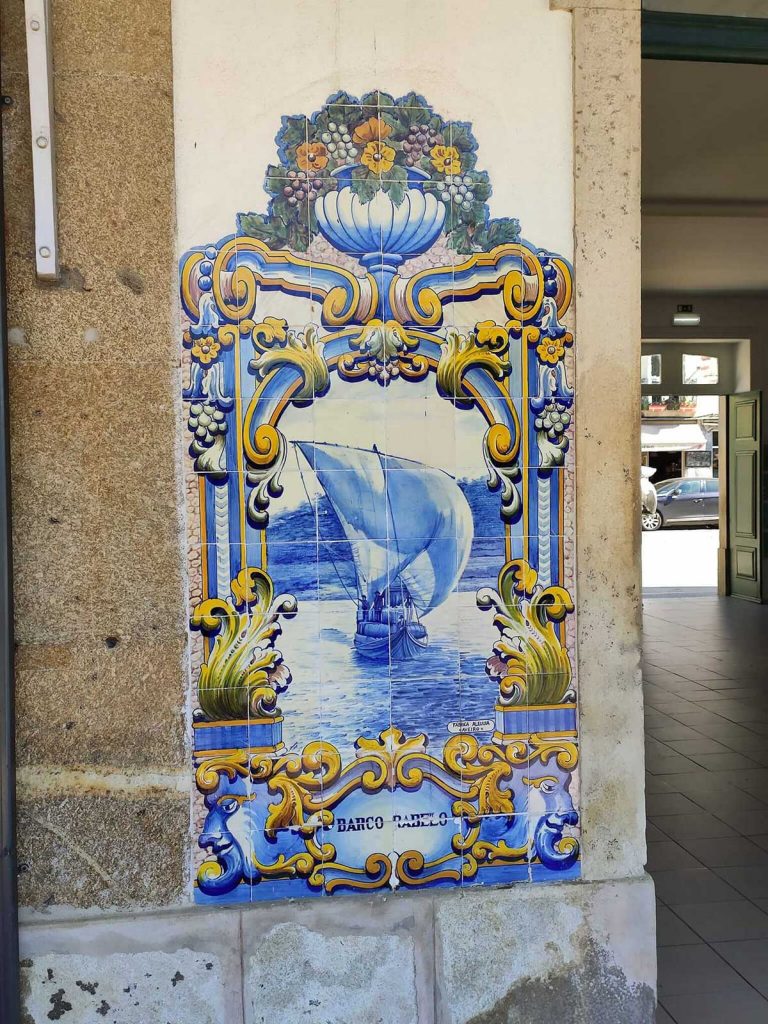
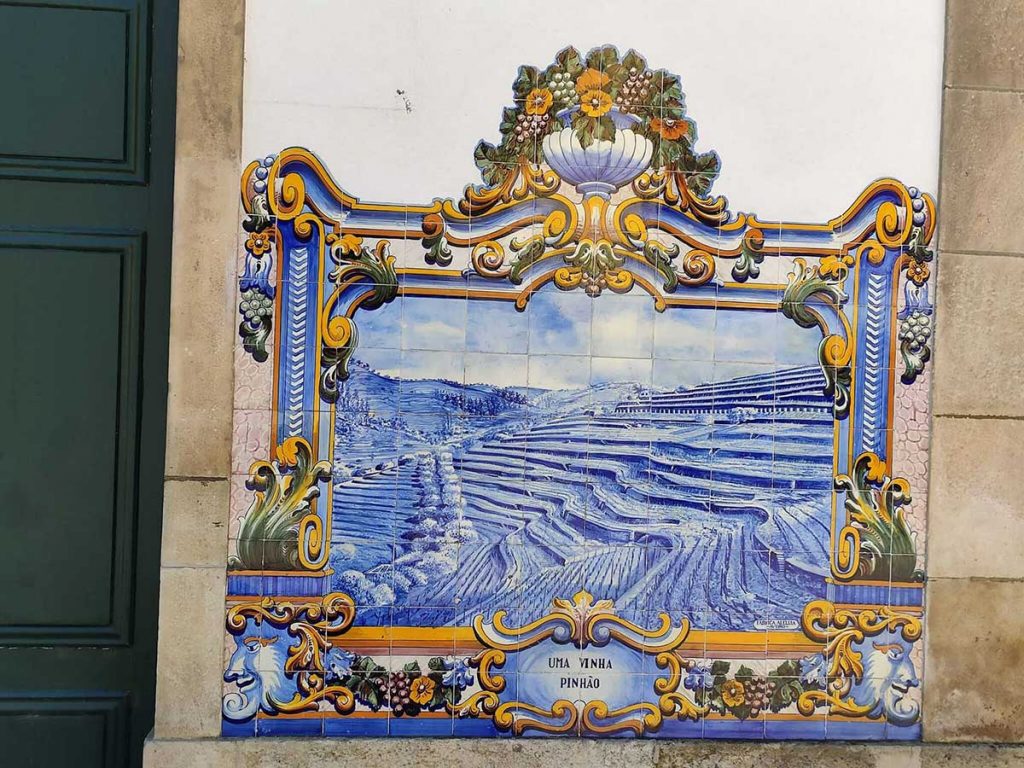
In Pinhão, you can take boat tours on the Douro River—either an hour-long trip or a 3.5-hour cruise with wine tastings. The road to the next destination—the town of Lamego—winds through vineyards: this entire region is one vast winery.
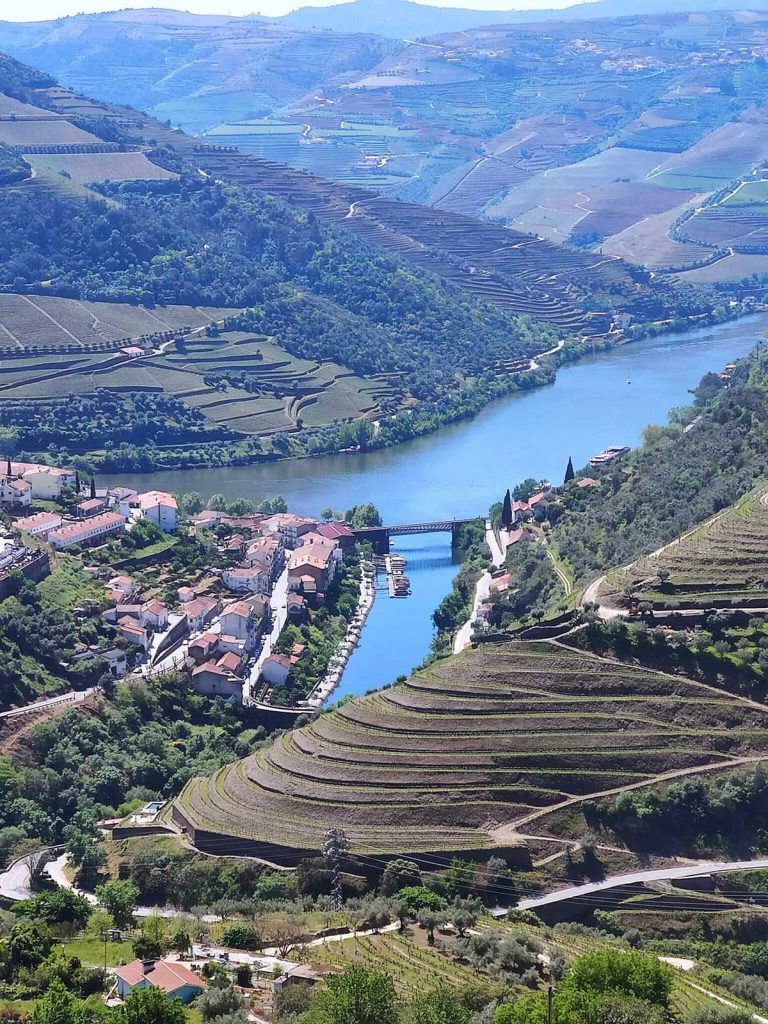
In Lamego,our nest destination, there is a cathedral of which only the bell tower, cloister, and a few small sculptures remain from its Romanesque past. We spent a long time trying in vain to drive up to the castle, and when we climbed to it on foot, discovering that apart from the keep—visible from almost everywhere—there was nothing else there.
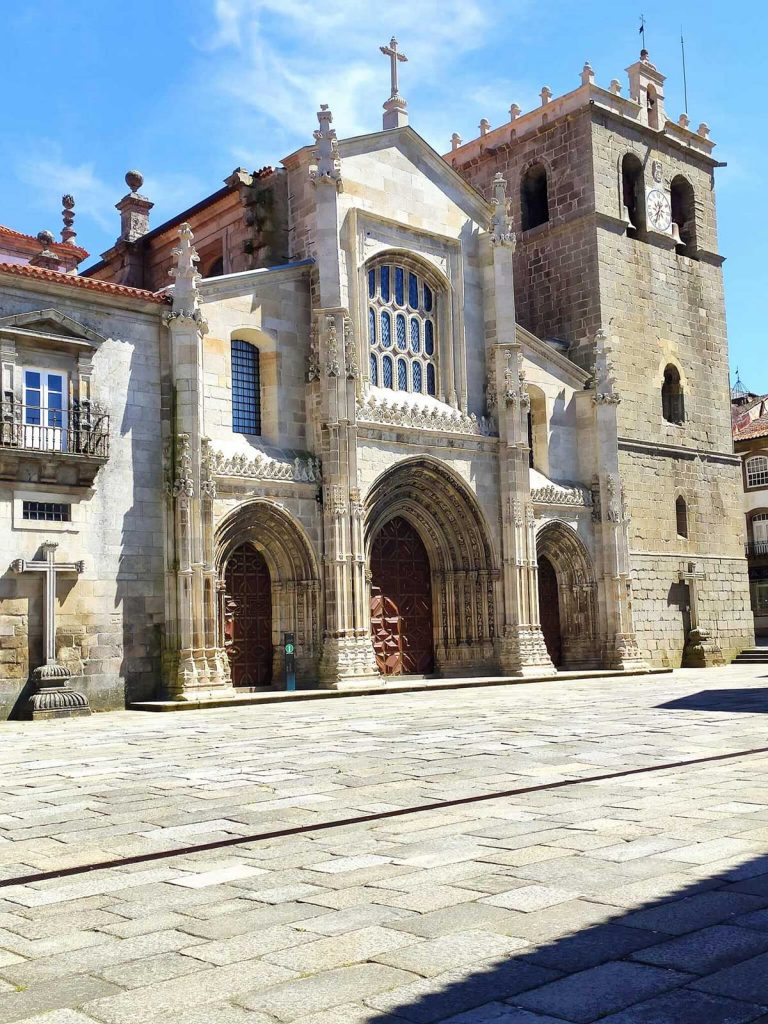

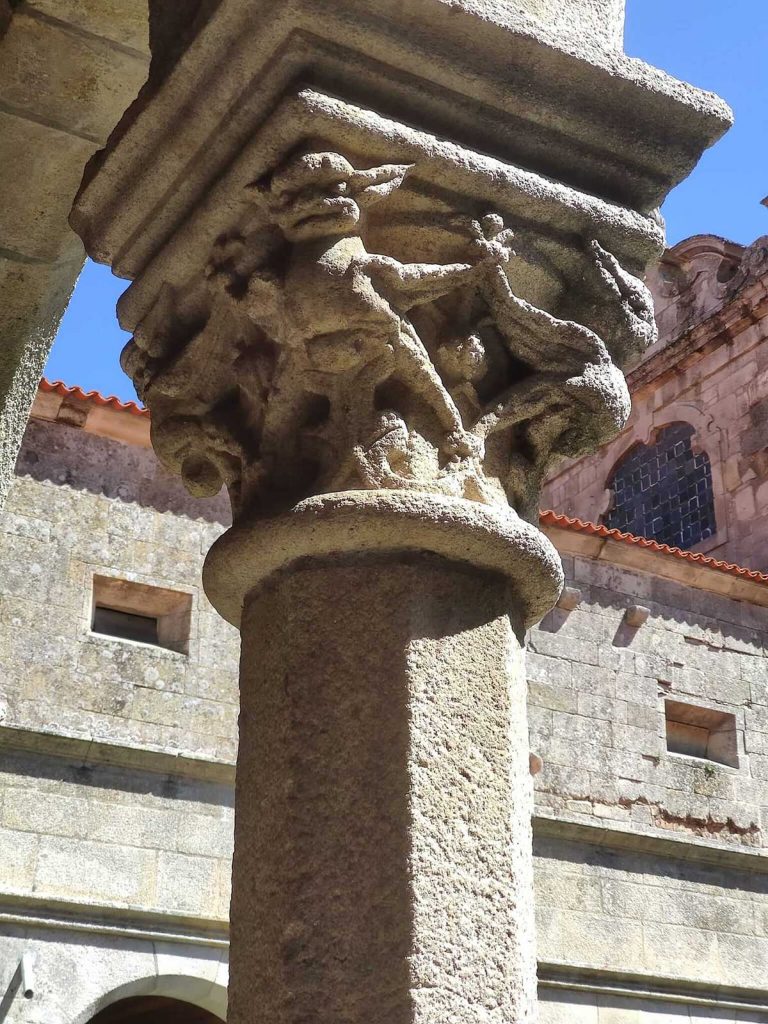
Then, through a beautiful forest, we headed to the 18th-century Rococo-style Church of Our Lady the Healer, which towers above the town and is accessed also by a staircase of 686 steps. The staircase has nine terraces whose façades are adorned with azulejos, and on the very top terrace are some very interesting figures, seemingly kings.
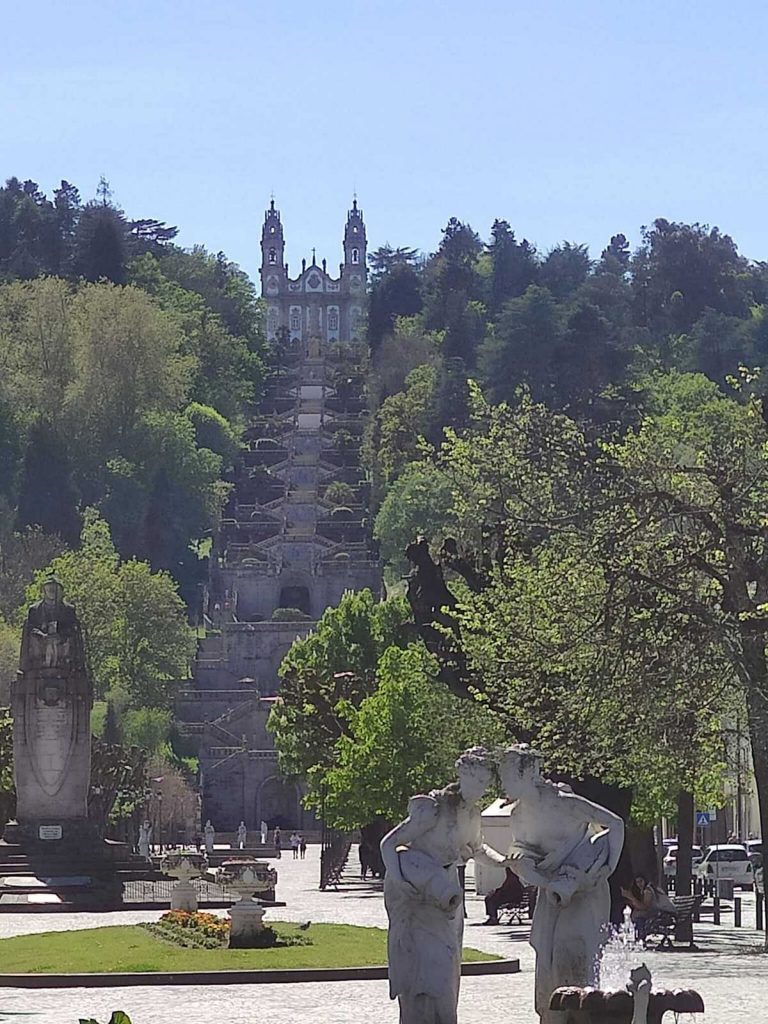
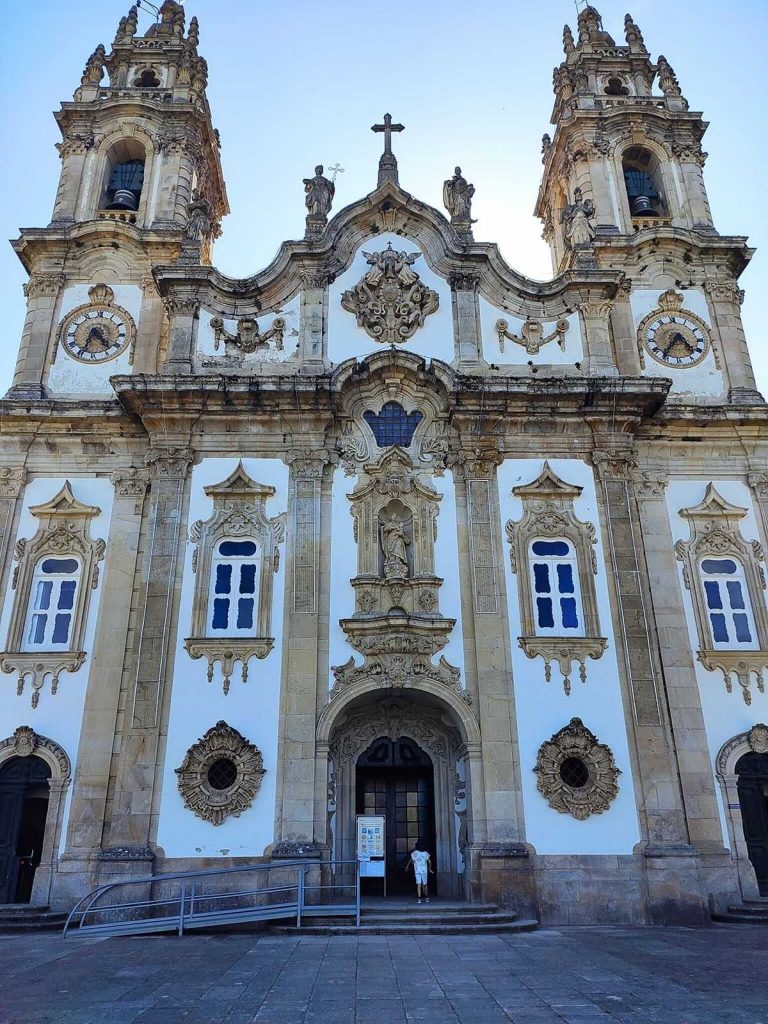
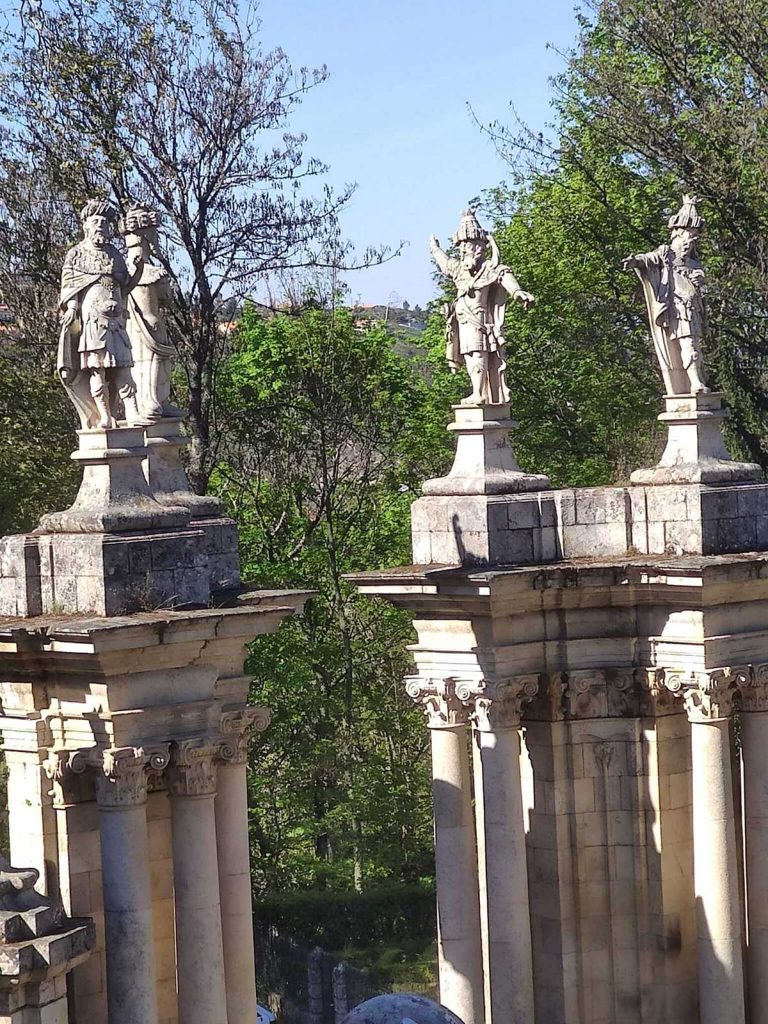
After Lamego, we planned to visit the longest pedestrian suspension bridge in Europe—the Arouca 516 Bridge (Ponte 516 Arouca), 516 meters long, spanning the Paiva River at a height of 175 meters—and to walk the stair-and-boardwalk trail over eight kilometers long (Passadiços do Paiva) built in the remote forested area nearby. However, the latter proved to be too difficult for me, so we had to forgo it.
From the highway to the bridge, it’s just over an hour’s drive through almost uninhabited and breathtakingly beautiful landscapes, including a stretch past an incredible stone chaos that we intended to photograph on the return trip. But we misjudged: our lodging was to be reached by a different road. This area is known as the Arouca Geopark. We couldn’t cross the bridge because, firstly, we missed the last guided tour, and secondly, the tickets (which can only be purchased online for €12) were already sold out for both today and tomorrow. But we had no regrets: both the scenery and the brief view of the bridge itself made the detour worthwhile.
